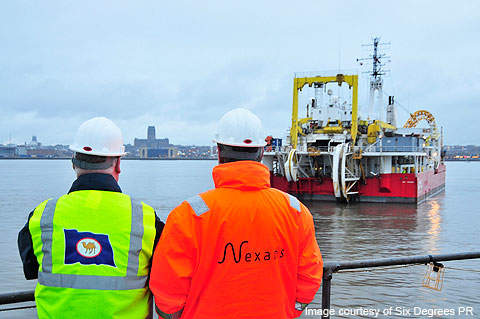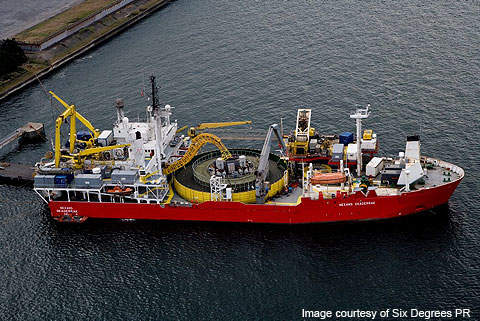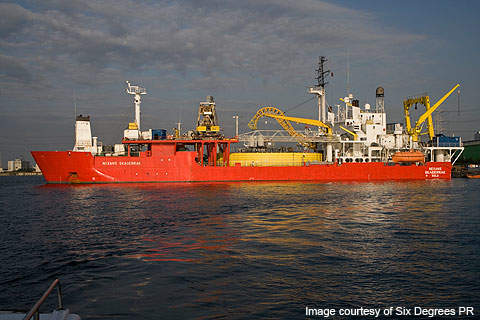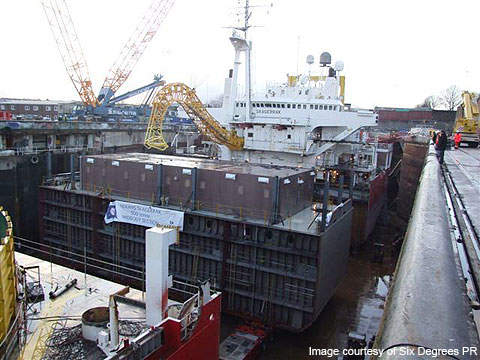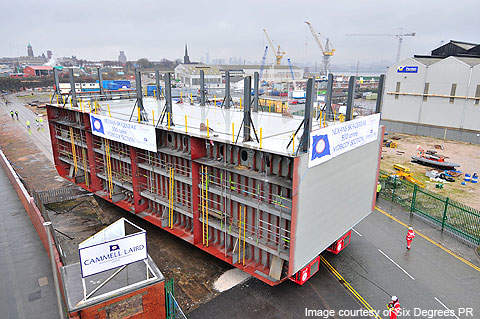The Nexans Skagerrak cable laying vessel was originally built in 1976 at E Ogrey Mek Verksted in Farsund for Statnett Transport. It was known as the Bourbon Skagerrak.
Skagerrak had been in service with Nexans for many years on a long-term charter basis before the company bought it out. The vessel was involved in power links between Spain and Morocco carried out in 1997 and 2005. In 1999, the Skagerrak carried out the Gemini project in the Gulf of Mexico. In 2004, it completed the Abu Safah project in Saudi Arabia.
The vessel was acquired by Nexans in 2006. It established the world’s longest high-voltage submarine power link (NorNed link between Norway and the Netherlands) of 580km in 2008. Skagerrak underwent a complete renovation at an investment of $10m at Cammell Laird shipyard in the UK in March 2010.
The refurbished vessel has been deployed in the North Sea, laying 292km of high voltage direct current (HVDC) cable and a separate optical fibre cable for the Valhall PFS (power from shore) project. After the completion of this project, the Valhall offshore platform will have an onshore power-generation facility.
Skagerrak construction
Considered one of the most powerful cable laying vessels in the world, Skagerrak was the first purpose-built ship specially built to transport and install submarine high-voltage power cables and umbilicals.
Skagerrak was upgraded in order to satisfy the changing requirements of customers in the areas of subsea interconnectors, and oil and gas. Cammell Laird Shiprepairers and Shipbuilders was selected as the contractor for the refurbishment of the vessel. The company was chosen for its competitive pricing and conditions.
The shipyard’s location in England was also suitable for the ship’s next assignment on the Norwegian Valhall oil field.
The upgraded vessel now is capable of carrying out cable and umbilical installation works on larger scale. The conversion work included use of a new pre-fabricated hull segment of length 12.5m. After installing the hull segment, the overall length of the vessel was increased to 112.25m from 106m.
A new work deck and an extra accommodation section was built to increase the number of single cabins. The total number of single cabins on board now stands at 60, up from 49. The new work deck, fitted with cable-handling equipment, has increased the on-deck storage area from 900m² to approximately 2,000m². The hospital facility has been retained. Deadweight of the vessel has increased from 7,886t to 9,373t.
Cable laying and control equipment
The vessel is equipped with a sophisticated global positioning system (GPS) and is capable of deploying Nexans’ specialist Capjet ROV trenching systems (used in cable burial operations).
The vessel also uses a computerised cable laying control system. The control system utilises two lay speed / length sensors, one lay wheel load sensor, one cable top angle sensor and one high-accuracy echo sounder.
Additional cable handling instruments can be fitted to the vessel to carry out operations such as piggyback laying, cable repairs and installation of two cables simultaneously with controlled separation.
Lifting appliances and winches include 40t safe working load (SWL) A-frame, 20t SWL main crane forward, three 5t SWL aft deck crane, two 30t SWL linear winches and two hydraulic manriding cherry pickers.
The vessel is also equipped with Capjet and Spider trenching units to carry out burial operations.
Cable repair equipment in the vessel includes cable splice and cable handling equipment. Splicing equipment can be fitted with ready connections to ship utilities, whereas cable handling equipment needed during cable repair is kept on-board permanently.
Skagerrak propulsion
Main propulsion of the vessel is based on a combustion engine. The vessel is fitted with three stern thrusters and two bow thrusters. The two stern thrusters are capable of generating 3,886kW of power in total, while the third one can generate 1,000kW. The power generated by the first bow thruster is 1,820kW and the second is capable of producing 957kW.

